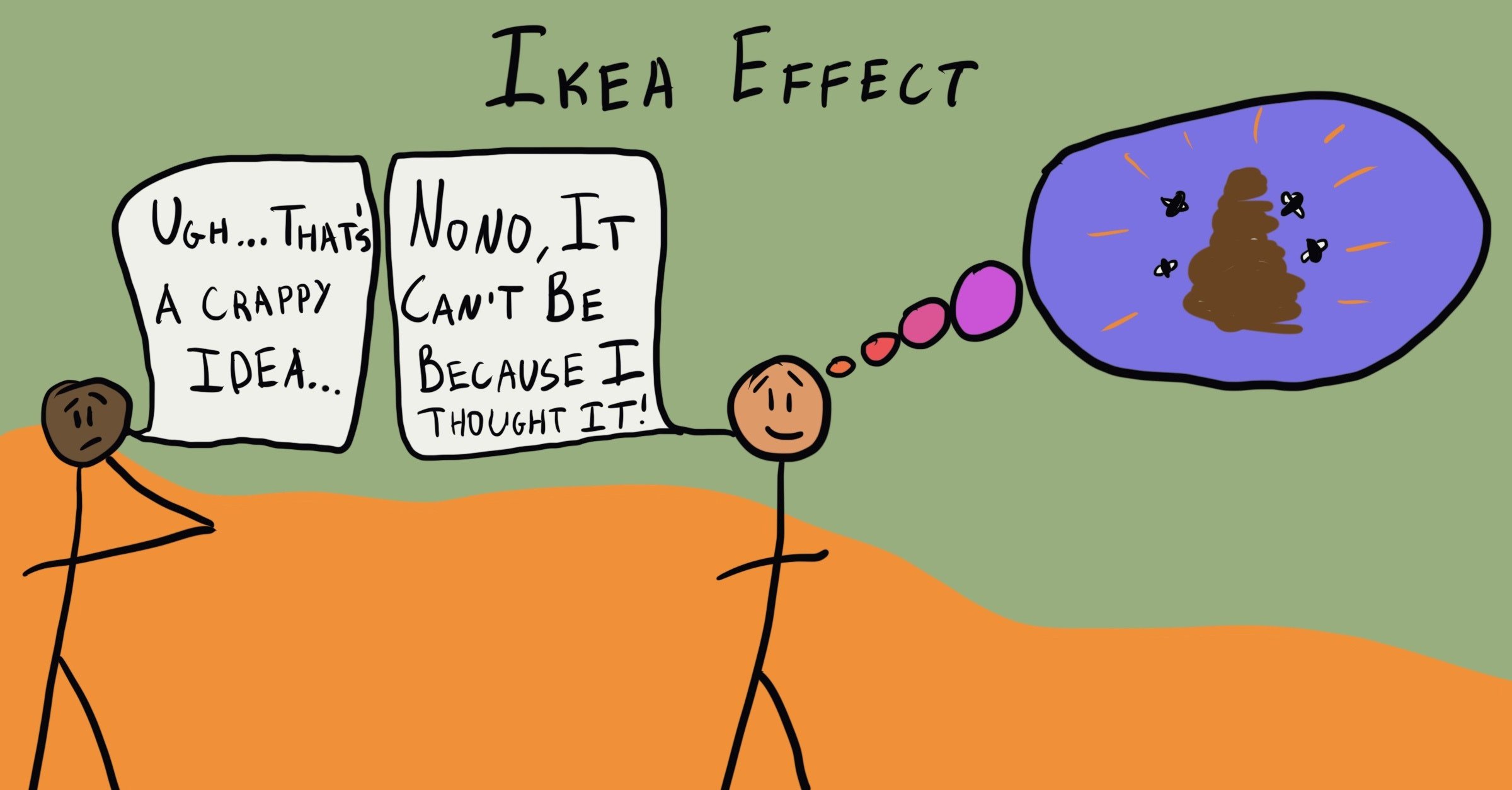The IKEA Effect: The Love for What You Build
The IKEA Effect is a cognitive bias that refers to the human tendency to overvalue items they have partially or fully created or assembled themselves. This bias is named after the well-known furniture retailer IKEA, where customers assemble their furniture from flat-packed boxes.
Examples of the IKEA Effect:
DIY Furniture: When people purchase and assemble furniture from stores like IKEA, they often develop a sense of attachment and pride in their creation, even if it’s a relatively simple piece.
Homemade Gifts: Handmade gifts, such as a knitted scarf or a personalized photo album, are often treasured more by recipients due to the effort and personal touch involved.
Cooking from Scratch: Preparing a meal from scratch can lead to a greater sense of satisfaction and enjoyment when eating the finished dish compared to consuming a pre-packaged meal.
The IKEA Effect in Action:
Consider a scenario where two friends, Alice and Bob, purchase identical bookshelves from a furniture store. Alice buys the pre-assembled version, while Bob purchases the unassembled flat-packed version, which he has to put together. After completing the assembly, Bob feels a sense of accomplishment and connection to the bookshelf that Alice does not experience. He values his bookshelf more than Alice values hers.
Solutions to Mitigate the IKEA Effect:
Objectivity: Encourage individuals to maintain objectivity when assessing the value of their creations. Remind them that personal effort and attachment should not cloud their judgment of an item’s true worth.
Second Opinions: Seek the opinions of others who were not involved in the creation process. This can provide a more balanced perspective on the quality and value of a product or creation.
Critical Evaluation: Encourage individuals to critically evaluate the qualities and features of a product or creation rather than relying solely on the emotional attachment tied to their effort.
Awareness: Make individuals aware of the IKEA Effect and how it can influence their judgments. By recognizing the bias, they can take steps to mitigate its impact.
In conclusion, the IKEA Effect is a cognitive bias that leads individuals to place a higher value on products or creations they have personally assembled or partially built. To mitigate the impact of this bias, it’s important to maintain objectivity, seek second opinions, engage in critical evaluation, and raise awareness of the bias itself. By doing so, individuals can make more accurate judgments of the value of their creations.
